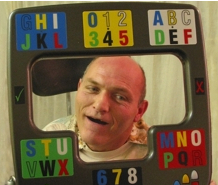




The Elmendorf textile tearing test is a standard procedure for measuring the ripping strength of cloth. This is useful to retailers to check the quality of goods supplied, as well as to cloth manufacturers and buyers as a determination of specifications and conformity to them.
The project was being run by a mechanical engineering consultant, Oliver’s Army Ltd (www.oliversarmy.co.uk) who had been let down by his electronics sub-contractor. On entering the project it could be seen that the previous electronics designers were inexperienced and had developed an insufficient power supply to manage the solenoid switching tasks. What was more concerning is that the testing machine required to undertake considerable mathematical tasks such as the determination of force from two s peed measurements with variable known counter weights, and to present those results in a variety of SI, CGS and imperial units – the software that had been developed to date was merely a menu selection system and the floating point capability was beyond the ability of the designers.
To solve the problem E2L developed a switch mode power supply and a new menuing/display system with floating point handling, built around a PIC18F876 microcontroller.
In addition, E2Ls mechanical engineering skills were used to develop the mathematical basis of the force measurement based on two speed measurements at different places.
The unit also required a self calibration procedure due to the changes in friction of the swinging mechanism lubrication and temperature effects. A serial protocol was also implemented to provide automatic reporting on a laboratory network.
The project is an example of ‘design rescue’, picking up the constraints of the design halfway through the job and recovering the task successfully whilst the end client is under high pressure.


